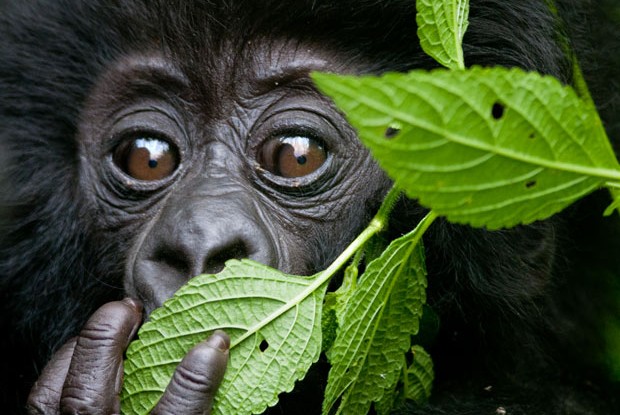Uganda’s parks and reserves still face many challenges and UWA uses new approaches to address them. The destructive events of the 70s and 130s were in part fuelled by resentment against park management practices that excluded neighboring villagers from the benefits of conservation and tourism. UWA works with rather than against local communities to achieve its goals. Education programs ‘sell’ the benefits of using land for protected areas rather than agriculture. Hunting is forbidden, but people may enter parks and reserves by arrangement to obtain spring water, deadwood for fuel, some fish, medicinal plants and other natural resources such as the corky ambatch timber which provides floats for fishing nets. A percentage of your park entrance fee is shared with boundary parishes for development projects such as schools, clinics and roads.
Conservation is an expensive business. Entrance fees meet just a fraction of the cost and UWA remains reliant on international assistance — and why not? The western world has already eliminated most of its ‘charismatic mega-fauna’ in the interests of development and a safe and comfortable standard of living for most. If the international community wants its grandchildren to see elephants, lions and chimpanzees (etc.) in one of the world’s poorest regions, it must surely expect to shoulder some of the cost.
Gorillas and rats; rift endemics
Individual wildlife species are described in later chapters. This section contains an overview of the significance of the rift valley for wildlife species and the efforts made to protect them.
East meets west in the Albertine Rift Valley, the grasslands of East Africa giving way to the steamy rainforests of the Congo basin and animals from both areas are present. From an East African perspective, Central African forest `spillovers’ and species endemic to the Albertine Rift (i.e. found only in the rift) are of most interest. These cause great excitement to biologists and conservationists who describe the rift in awed tones as an `ecoregion,’ a biodiversity hotspot and an ‘endemic bird area.’ They are right to be excited, for the Albertine Rift includes more vertebrate species than any other part of Africa, including 1060 bird species, 402 mammals and 175 reptiles of which 37 birds, 34 mammals and 16 reptiles are endemic to the region. The best known of the endemic mammals (indicated in capitals) are the world’s last 700 MOUNTAIN GORILLAS with the GOLDEN MONKEY (see colour plates) a distant runner up. The rest are mostly small rodents. These are of incalculable value to science but as rat tourism has yet to take off in Uganda, most visitors are simply surprised to learn of the variety of extremely rare rodents that might eat their luggage. They include WOOSNAM’S BRUSH-FURRED RAT, THE WESTERN RIFT PYGMY MOUSE, KEMP’S FOREST RAT, DELANY’S MOUSE, the MONTANE MARSH RAT, MONTANE THICKET RAT, MOLE RAT, two kinds of PAPYRUS RAT, the RWENZORI CLIMBING MOUSE, and a potential suitcase-full of vulnerable, critically-endangered, endemic or near-endemic shrews including the intriguingly named LEAST LONG-TAILED FOREST SHREW.



